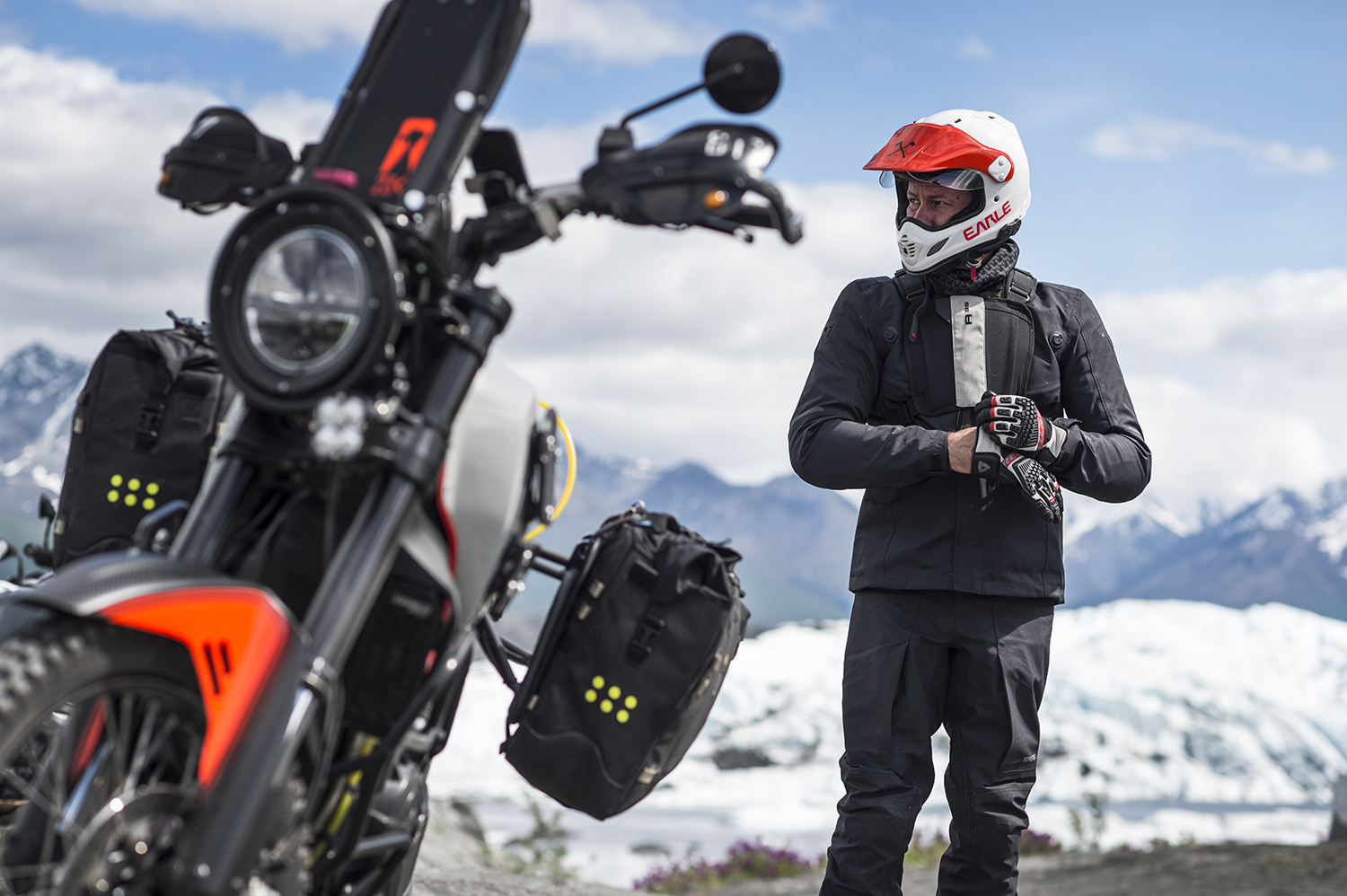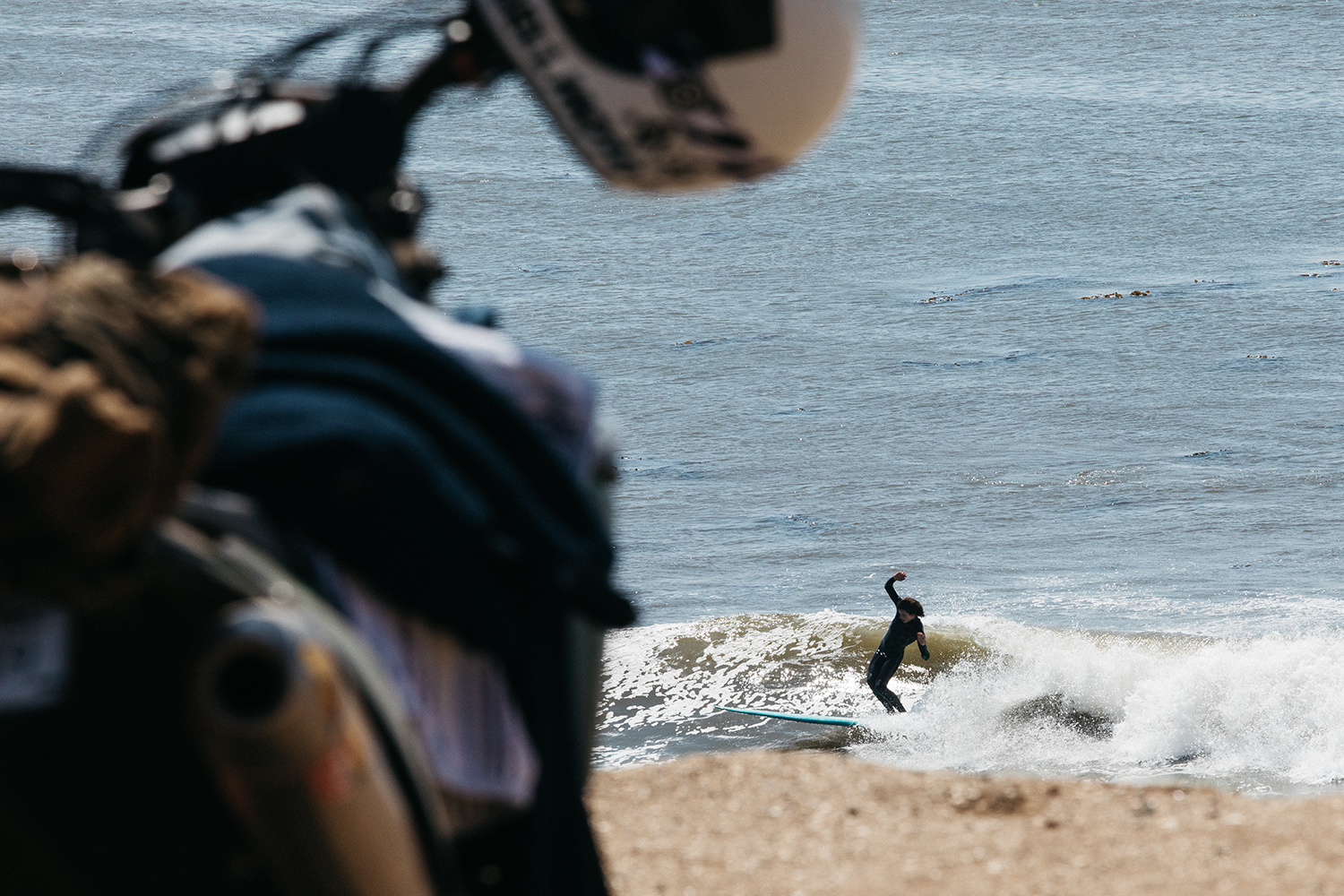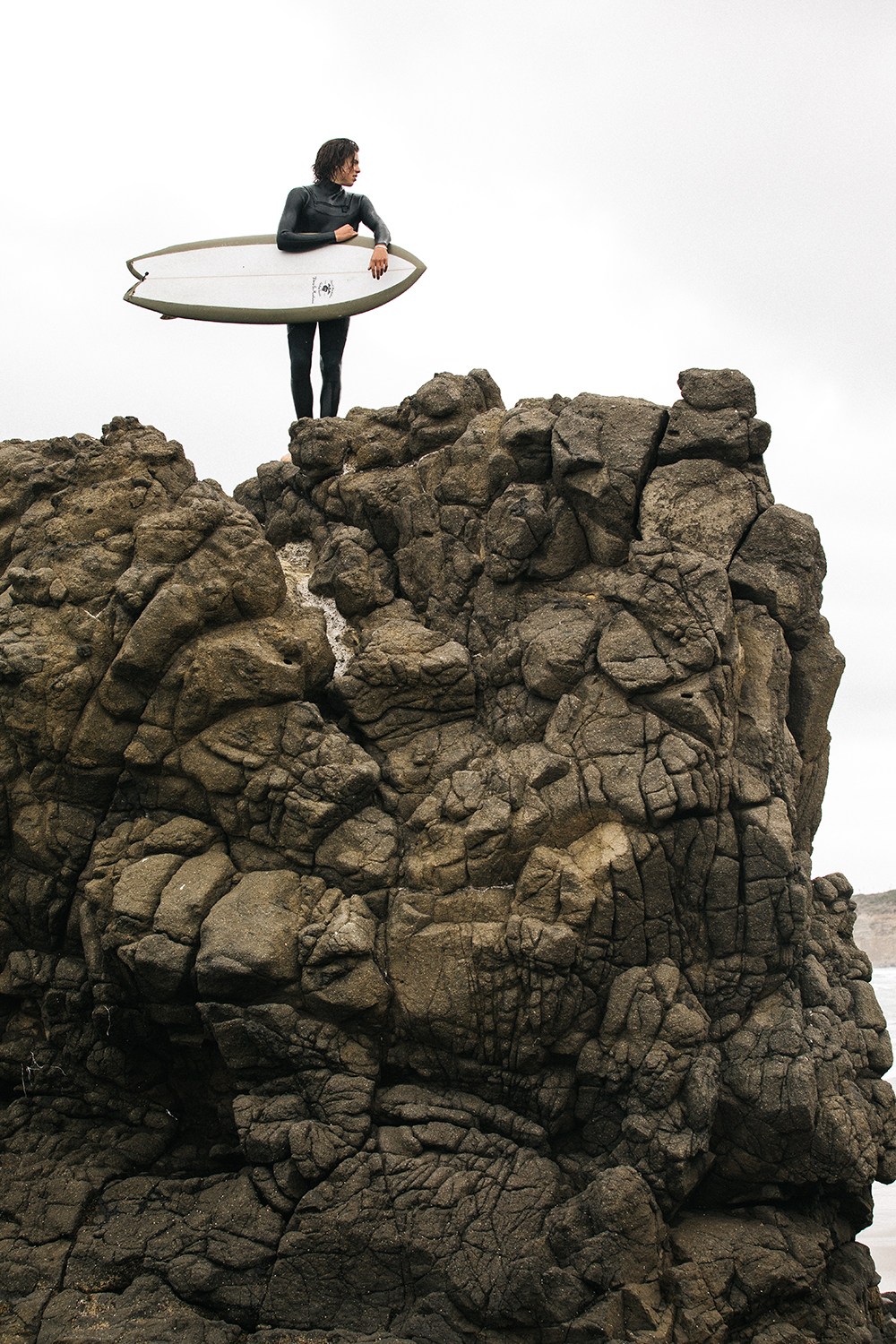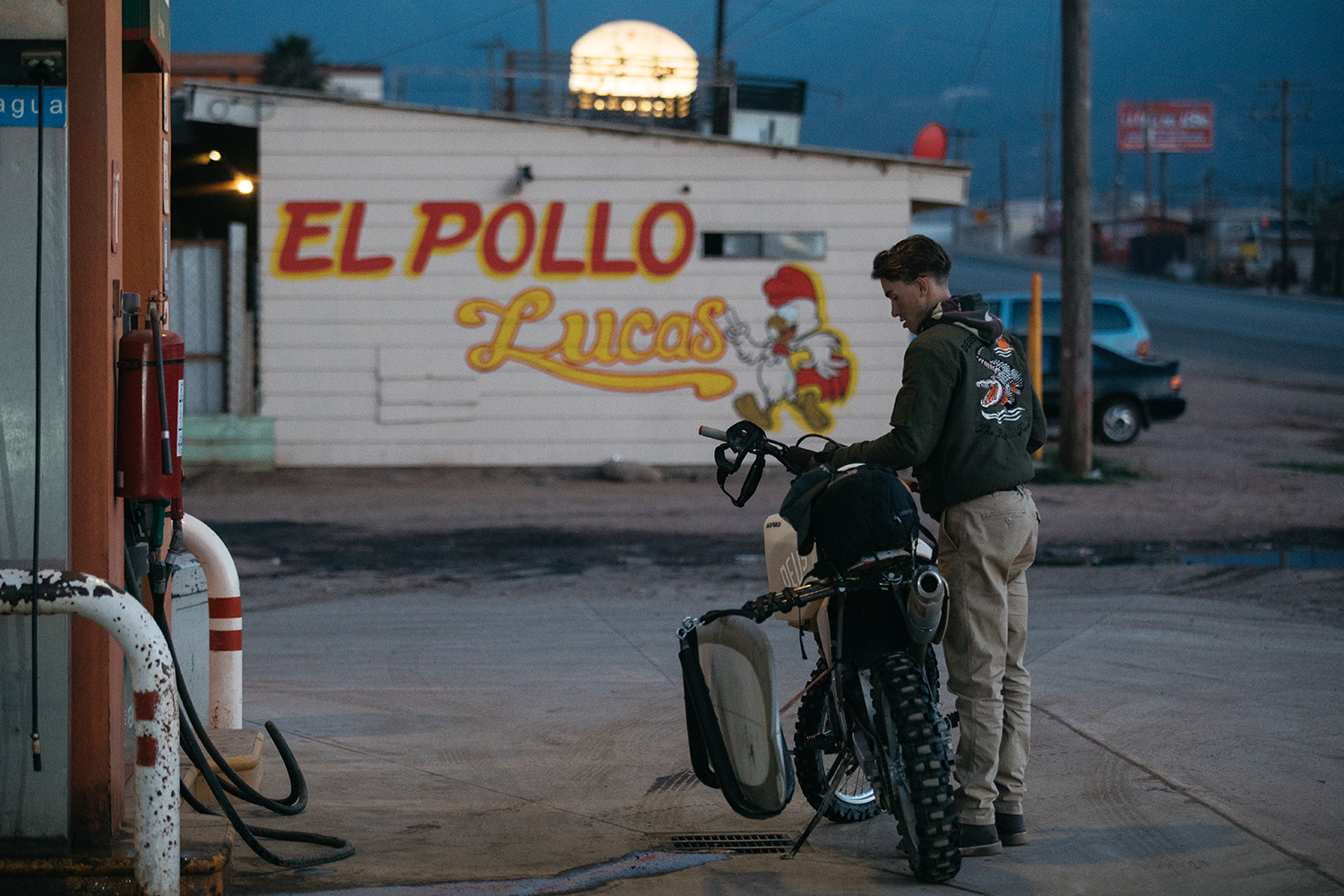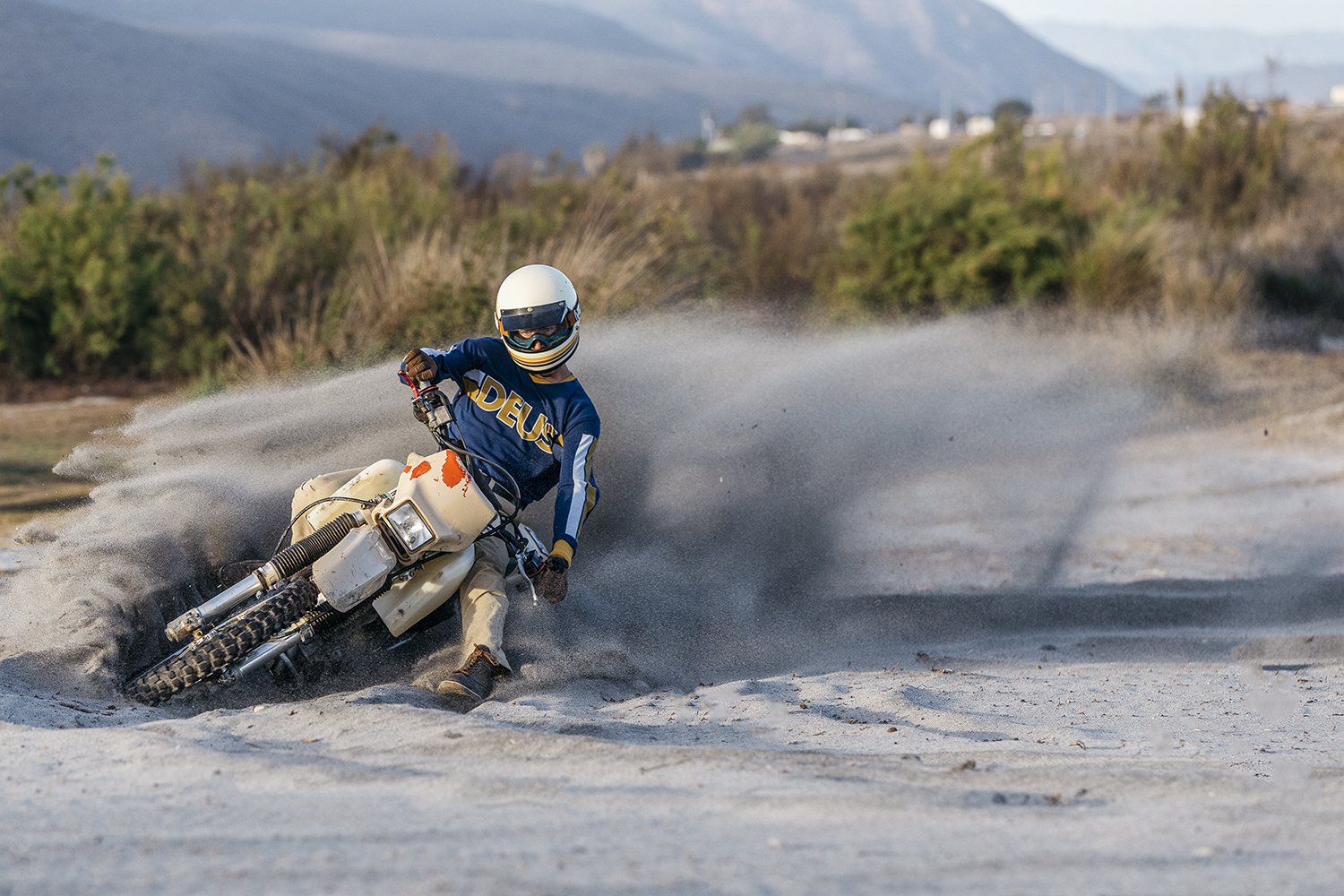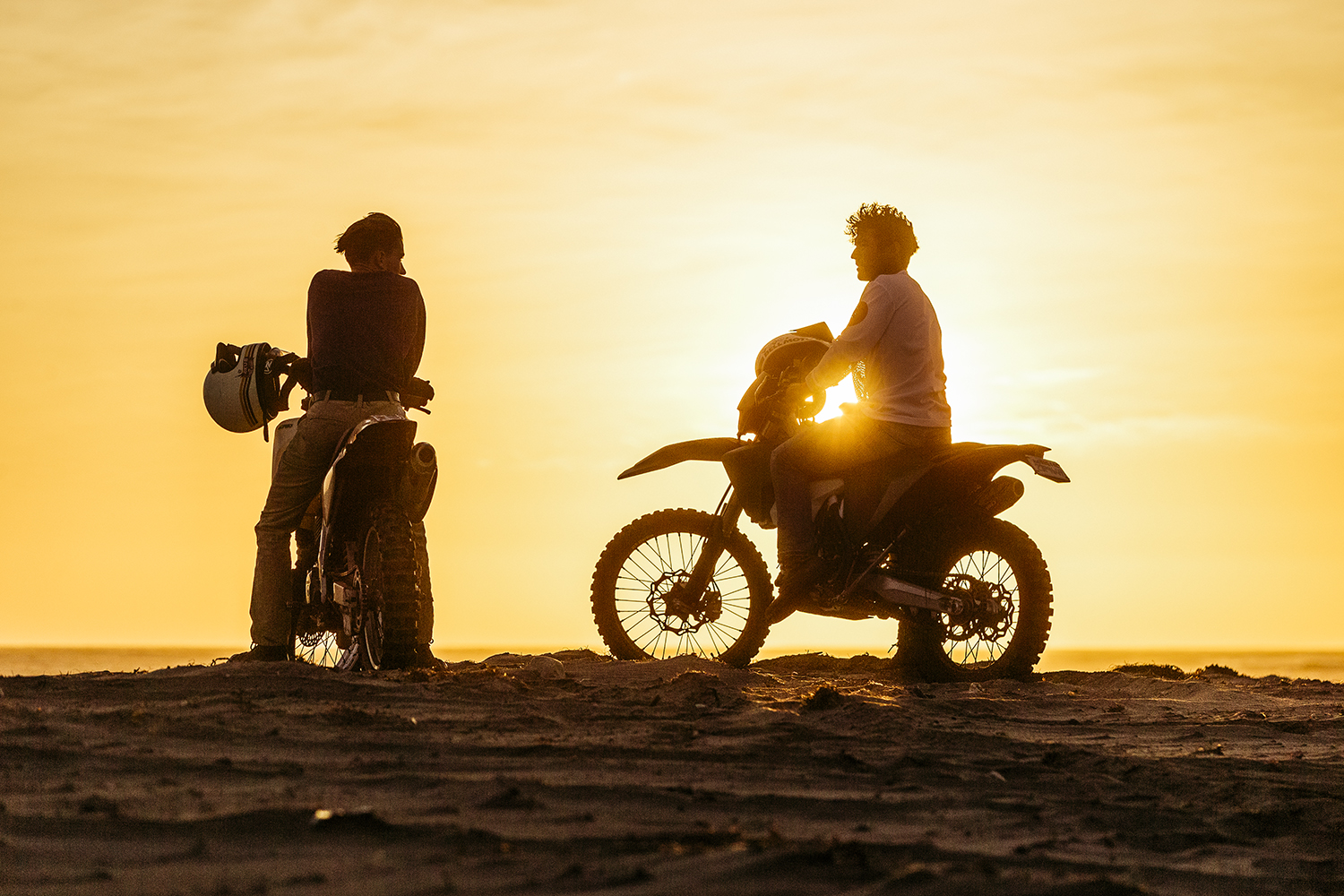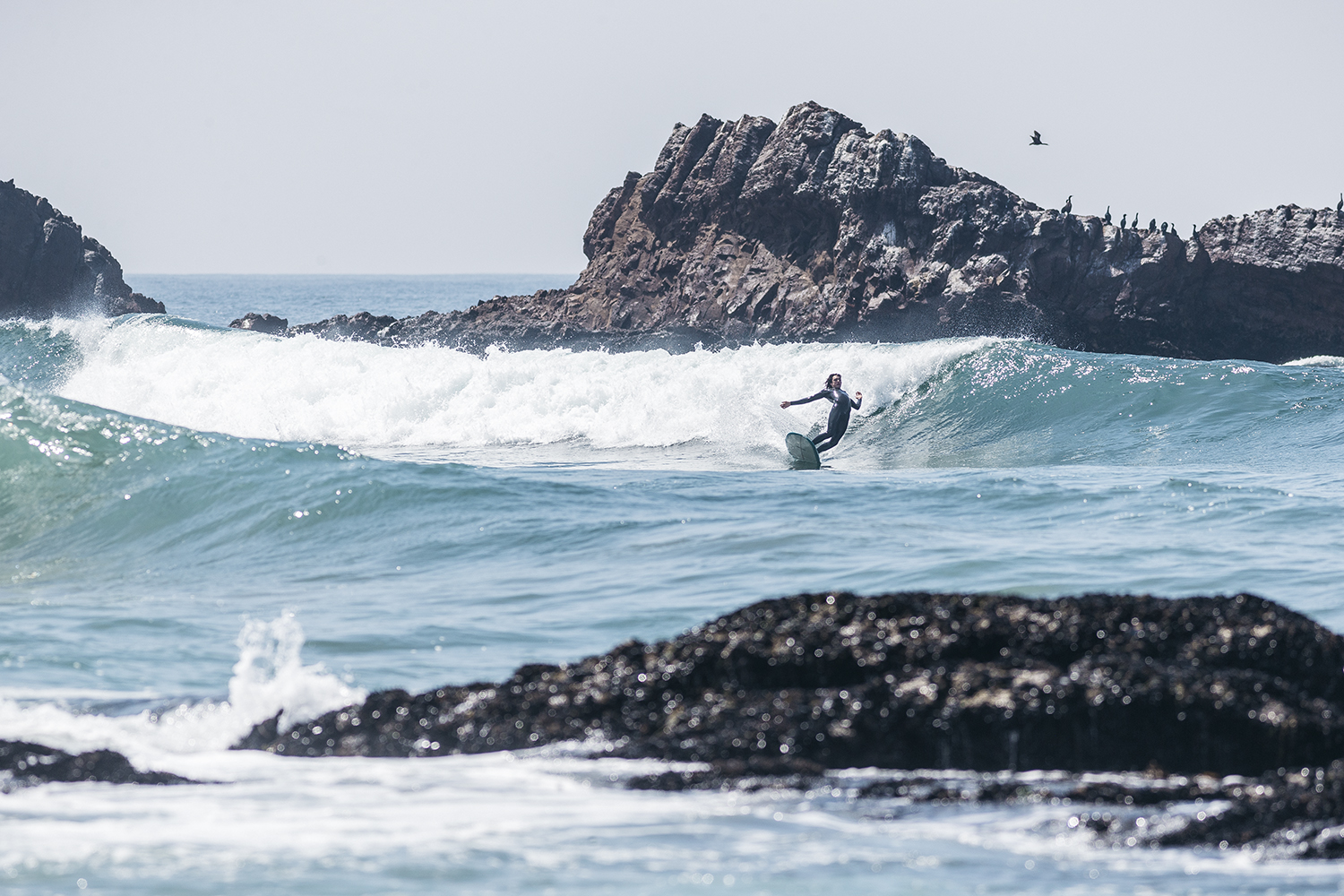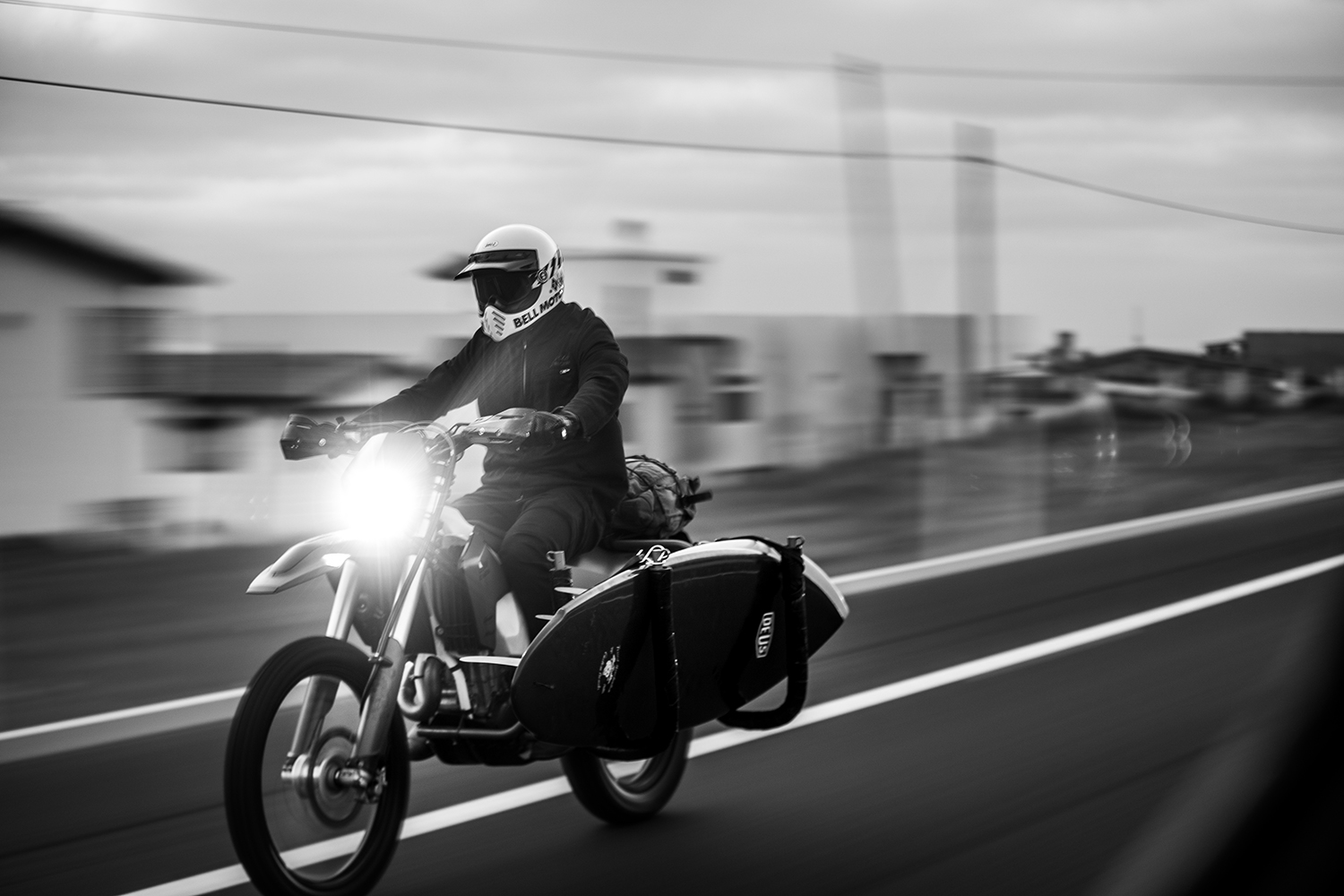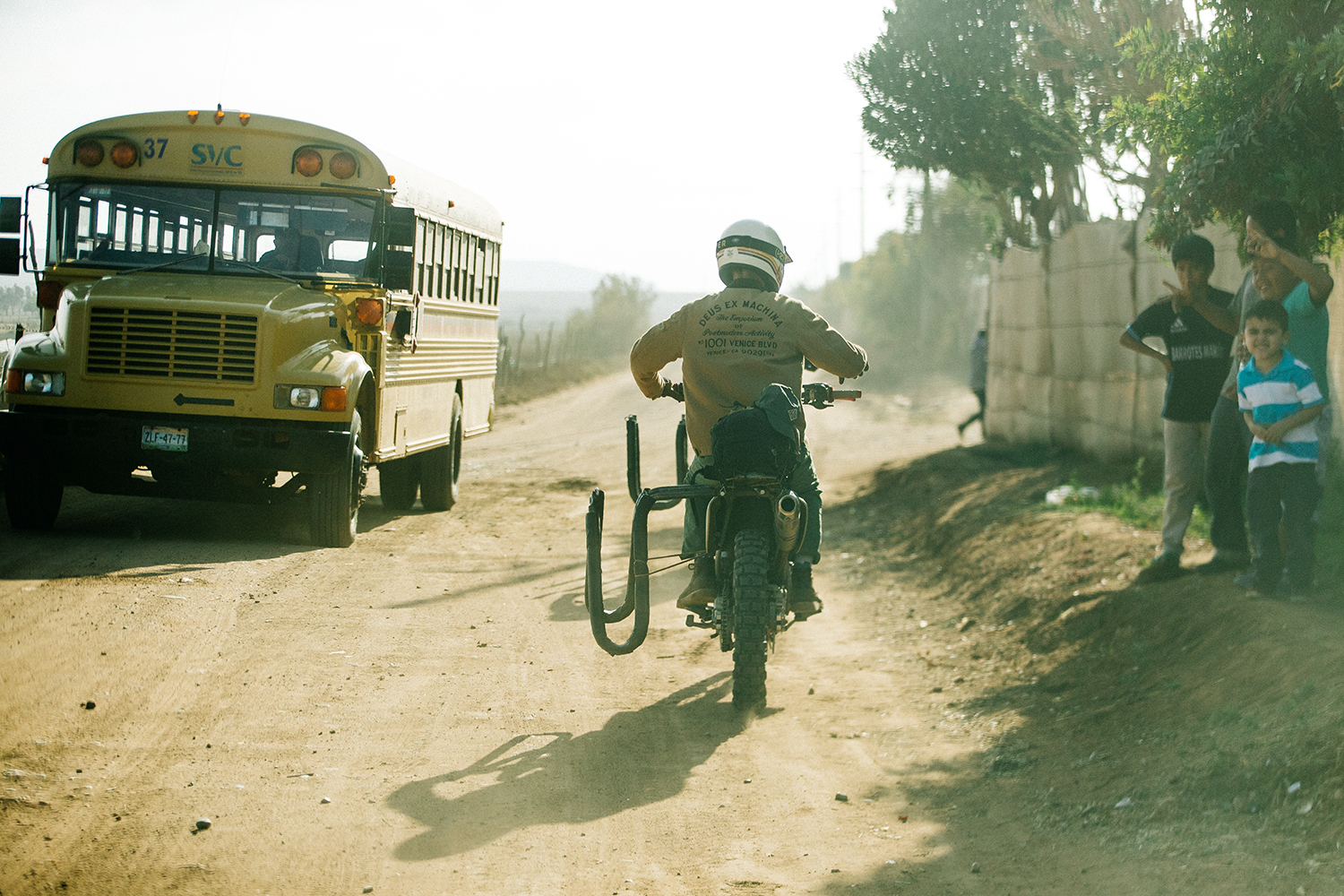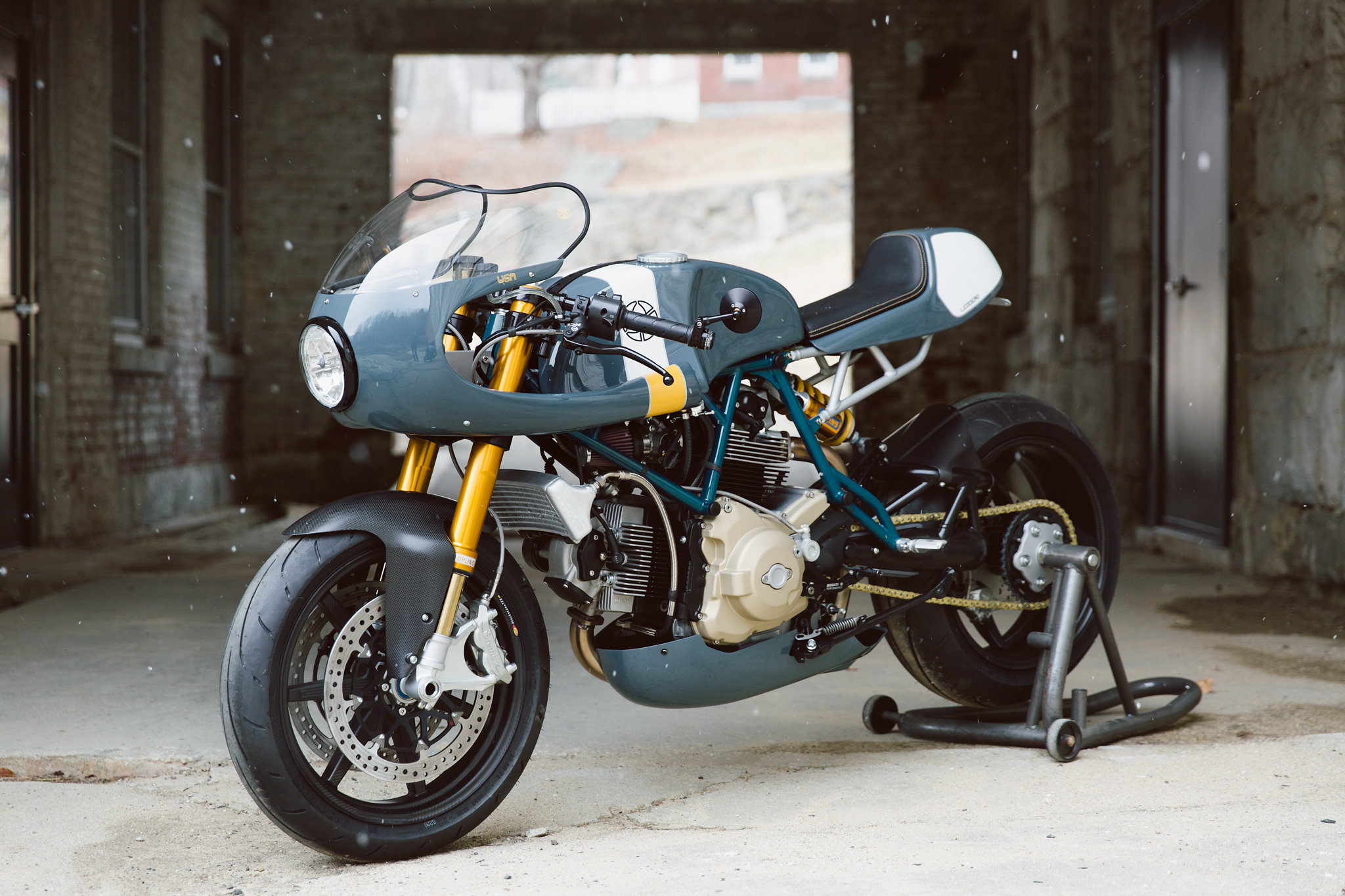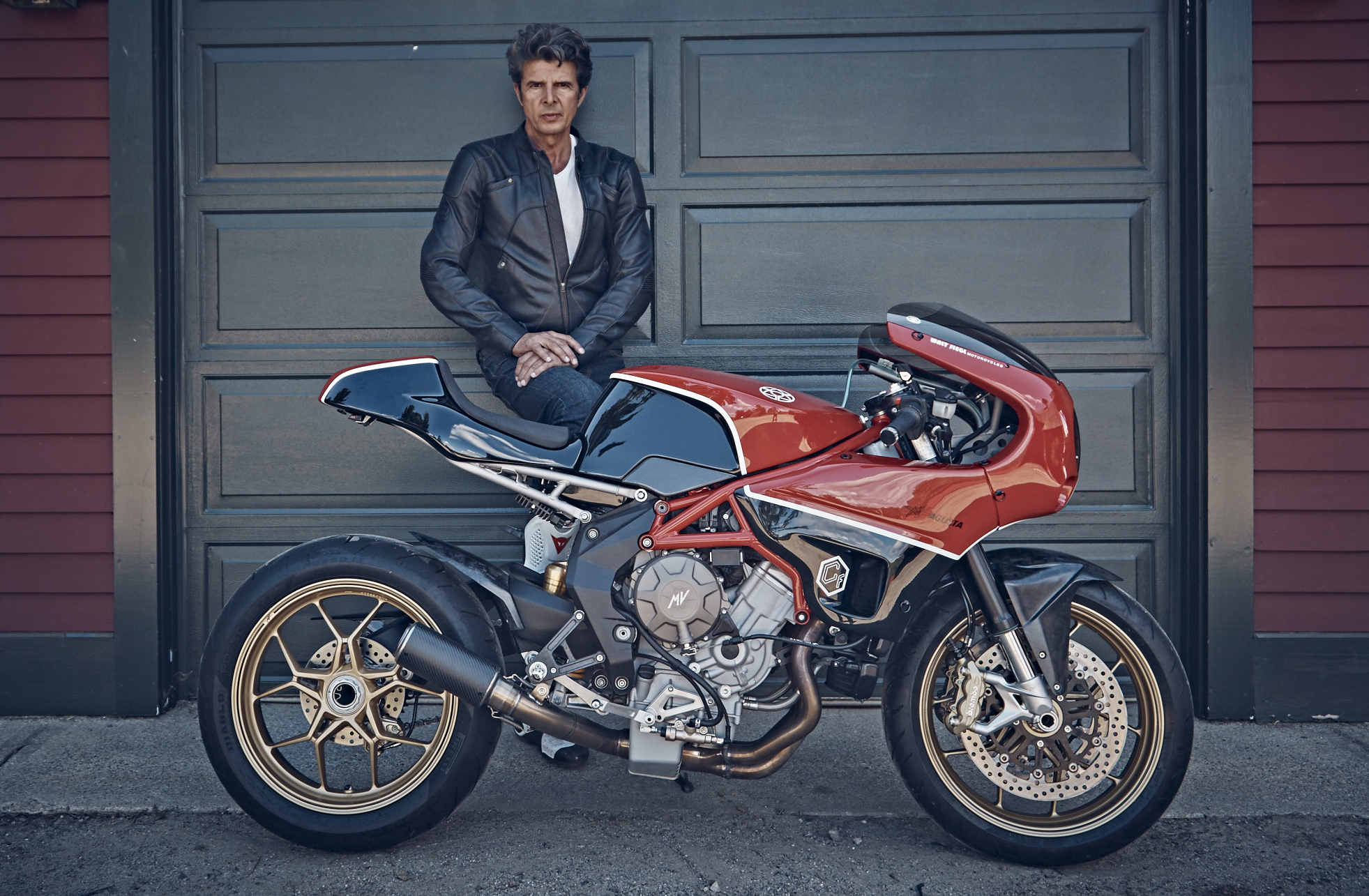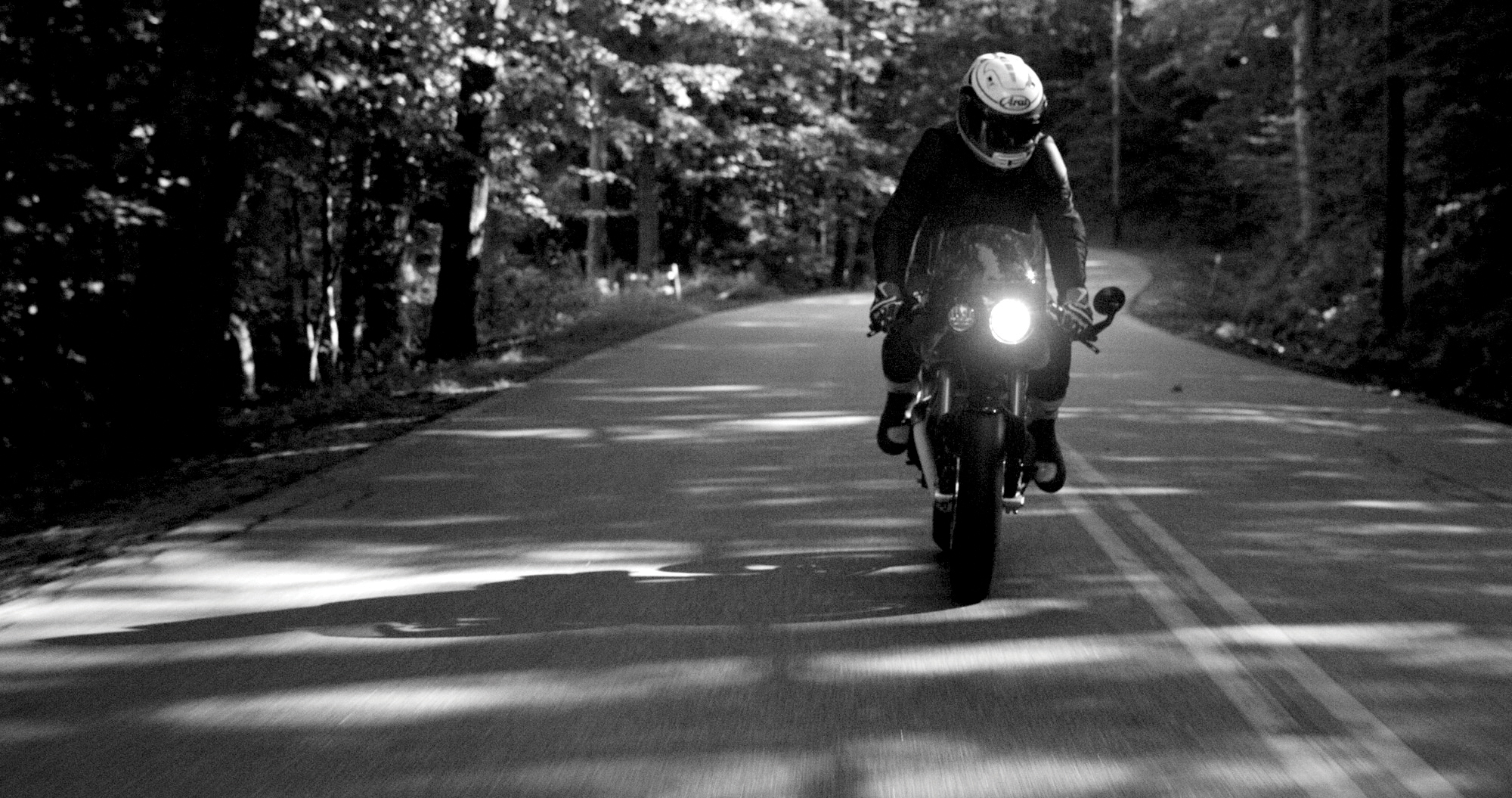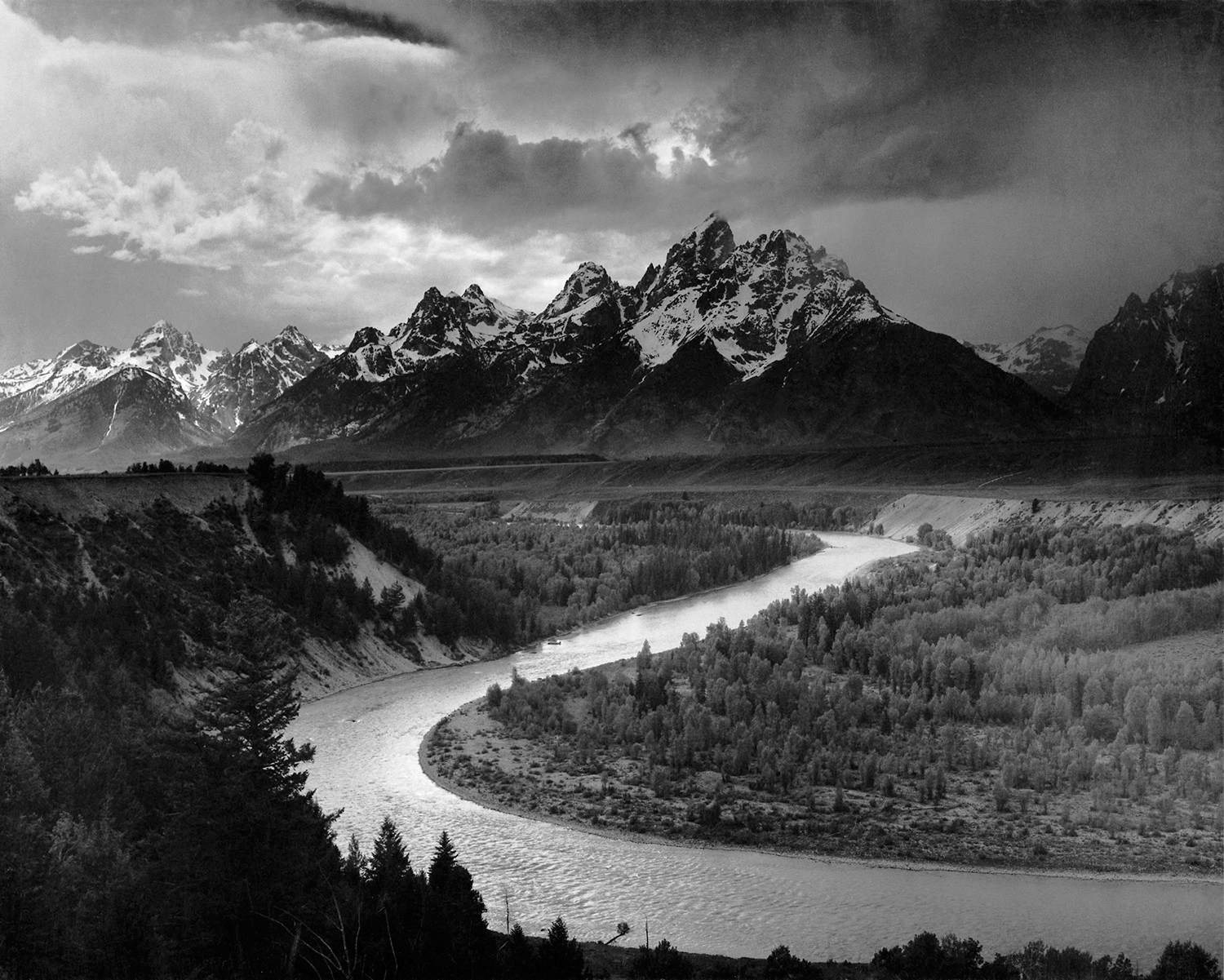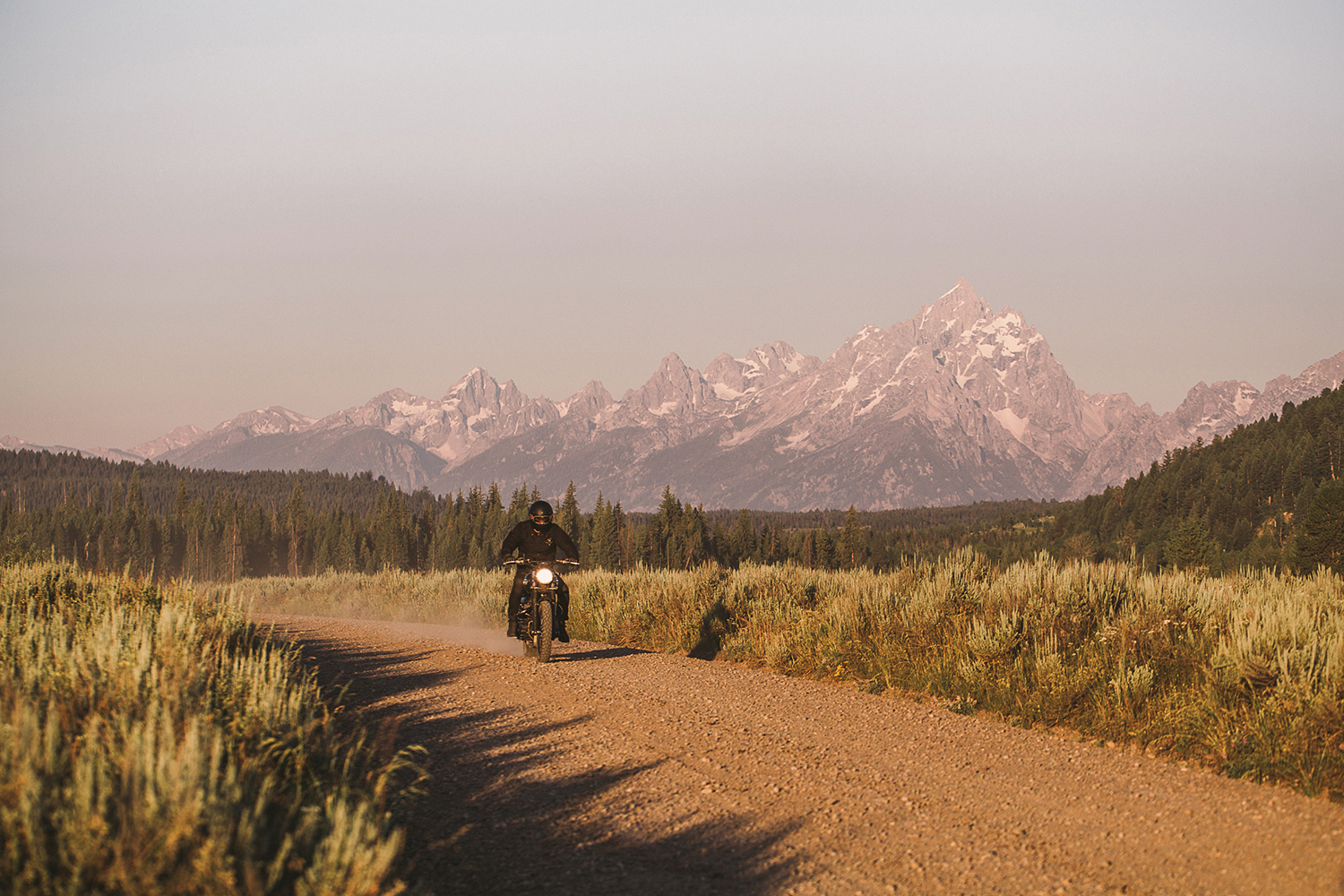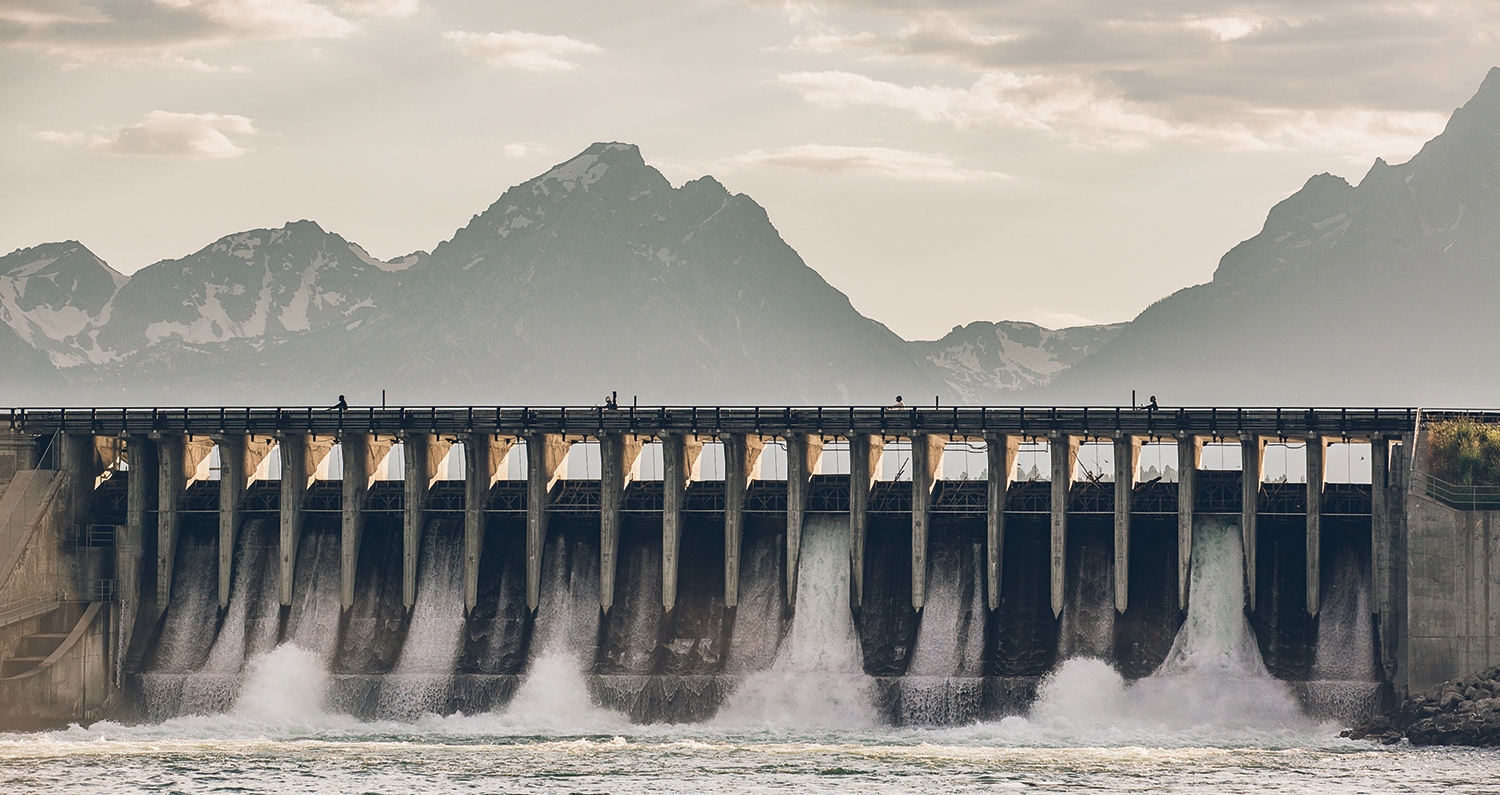Against the Current
Words by Brett Smith | Photos courtesy Fox Racing
Tampa, Florida. Saturday, February 24, 2018. 10:45 P.M.
The checkered flag stopped waving an hour ago, but in a grassy parking lot in Tampa a crowd swelled, the Coors Light flowed and a team member passed out commemorative T-shirts. Aside from one subtle clue, the scene looked like a championship celebration: The person responsible for the party—the reason for the gathering—struggled to have a good time. Chad Reed just wanted to go home.
Three dozen people gathered around Reed’s Team CR22 truck as his four crew members packed up, working around the revelers. Children played, running with the elated enthusiasm one possesses when fighting the urge to fall asleep. Selfie-seeking spectators loitered with their screens aglow, ready for the chance to grab a moment with Reed. He obliged every request.
Wearing street clothes—dark work shorts, a navy blue T-shirt and team hat—his smiles revealed both gratefulness and grimace. For a professional motorcycle racer, a two-time Monster Energy Supercross Champion in the middle of his 17th consecutive season in the series, the 2018 Tampa race wasn’t a good night. He seeded in 19th, transferred through the last-chance qualifier, and didn’t finish the main event because of an electrical problem. After his bike cut out for the third time, he pulled into the mechanic’s area and handed the motorcycle to Mike Gosselaar. Instead of heading back to his truck in warranted frustration, Reed stood in the dirt and watched the rest of the race.
Maybe he wanted to study the lead riders who, in better circumstances, he believes he can still beat; maybe it was just because he loves motorsports and wanted to watch the battle between Eli Tomac and Marvin Musquin. Maybe he wanted to spend a few more moments absorbing the one positive moment from the night. Competing an hour away from his adopted hometown of Dade City, Florida, in front of 42,411 spectators, Reed became the new ironman of supercross by starting his 228th premier class main event, surpassing a record Mike LaRocco owned for 12 years.
Winning the last-chance qualifier, he gave the crowd a nac-nac over the finish line and then stood on the podium, where the event announcer whipped up the crowd in recognition of Reed’s long—and continuing—career. Ninety seconds later, the moment ended. He went from genuine joy and thankfulness right back to preparing for the one record he truly has his heart set on: oldest supercross winner, which is 33 years, 11 months. Reed turned 36 on March 15.
The post-race party gave Reed’s fans, friends and family a chance to observe a rare achievement, put life on pause and appreciate the two-decades-long journey. “That’s what 228 meant to me,” said Chad’s wife, Ellie, from her dining room table less than 12 hours after the party ended. “You reflect on how much you’ve actually done, but you’re in the zone and [sometimes] you forget to stop and look up and go ‘Hey, what did we do?’ And that’s because [looking at Chad], you’re so head down, ass up, go, go, go. Nothing is enough for you. But he’s always been that way.”
When Reed showed up in Anaheim on January 6 for the opening round of 2018, he hobbled around on a bum right ankle. The two fractures he suffered in October to the talus bone had not fully healed. Medically speaking, he had no business racing a motorcycle. The talus sits below the tibia and fibula and forms the lower part of the ankle joint. It bears the entire weight of the body and, for Reed, that body was nearly 20 pounds over his preferred racing weight of 170 when he started the season.
The injury notwithstanding, Reed could not have chosen a more difficult path to go racing in 2018. He had no team, and he came out of pocket for the Husqvarna FC 450s he rode (he bought five of them). Chad and Ellie hastily assembled Team CR22 between Thanksgiving and Christmas, an effort that measured up far shy of the $4.2 million annual operating budget TwoTwo Motorsports (2011-2015) had. One of his primary sources of funding was a $1,200-a-person VIP fan experience open to 10 people a weekend. The money went to pay the travel expenses for Team CR22.
“I mean, we came into the [2018] season where I was like, ‘How are we going to pay our mortgage?’” Ellie said. Their inner circle had shrunk. Friends who said, “He doesn’t know when to give up” or “Doesn’t he know when enough is enough?” were clipped. When his agent appeared to give up hope, they parted ways.
Despite an uninspiring season, by far the worst complete season in his 20-year professional career, Reed scored points at all 17 rounds of supercross, one of only six riders to do so. He finished 13th in points with a best race of seventh. As his ankle healed, the speed and intensity he’d been known for didn’t return, and he plodded through the season as if in a [bad] dream. Yet, in August he spent one day testing with JGR/Suzuki and gelled so well with the bike and team that they asked him if he wanted to finish the rest of the Lucas Oil Pro Motocross season. He agreed to run the final round in Indiana on August 25. Off the couch, and 38 months after his last AMA Motocross, Reed went 5-8 for 8th overall.
“There’s so much more there,” Reed said. “I honestly believe that I can still win. That feeling of going out and riding and going at the level, like when I see—and I’m around it—nothing special’s getting done. These guys, the Tomacs, the Andersons, they’re not doing anything that hasn’t been done before. And I don’t believe they’re doing anything that I can’t do.”
The Reeds have always felt like they were in a school of salmon, fighting to swim upstream to survive, shouting “can” when others said “can’t.” What they are doing is perceived as going against the current, and they are OK with that. But why? Why is Reed still racing at 36, 10 years beyond his last championship, four years beyond his last win? If he qualifies for any main event in 2019, he would become the oldest of all time.
To answer this, it’s important to understand how he got here.
New South Wales, Australia. Circa 1997
Jay Foreman had never seen so much drive in one kid. The team manager for Suzuki Australia, Foreman couldn’t believe how quickly Chad Reed thrashed bikes. He destroyed a clutch a day on his RM 125s; the countershaft sprockets sometimes came back to the shop missing teeth. The bikes got no rest. At a natural riding area called Crazers, Reed often rode 10 minutes through the bush with a 20-liter drum of fuel between his legs. When it was empty, he rode home, filled it up and came back. He developed this habit when he heard a story about how Ricky Carmichael didn’t stop riding until he had burned through five gallons of gas a day. It could have been a tall tale, completely fabricated, but this was Ricky Carmichael, and Reed had a poster of the guy hanging above his bed. What he knew for certain was that Carmichael, only two and half years older, was already winning championships on the other side of the Pacific, so Reed told himself, “Yup, that’s what I gotta do.” So, he burned through as much fuel as he possibly could. And he took full advantage of the fact that Foreman’s shop was 20 minutes away from home. He’d ruin a bike and simply take it back for another one.
“It didn’t matter who was around helping him, he was going to make it,” Foreman said, dispelling any notion that Reed caught lucky breaks. “Nothing was going to stop him. He wanted it so bad.”
Foreman watched Reed grow up on the local motocross scene in New South Wales and picked the kid up to compete for Suzuki in the Australian Junior championships. When it was time to turn pro, however, Reed made it clear that he wanted to bypass the 125cc class completely. He found the displacement gutless, and he’d been riding 250s since he was 12. It was a highly unconventional move. “And a hard thing to convince my bosses at Suzuki Australia,” Foreman said. In New Zealand, riders could move to the senior (pro) division at 15. In October of 1997, Foreman sent him to Australia’s neighbor to compete in their professional motocross season on 125s and 250s. Foreman said the deal was that if he could beat rising star Josh Coppins (who was 20), then he could bump straight to the 250 class in Australia.
Reed doesn’t recall racing in New Zealand as being a “tryout period,” but he was definitely dead set against racing a 125 and viewed it as an opportunity to race pro. “When I make my mind up, it’s going to happen,” Reed said. “I wasn’t intimidated, nor did I look at those guys, such as Cameron Taylor, Andrew McFarlane, Michael Byrne, Peter Melton and say, ‘Oh my gosh, these guys are gnarly.’ My cousin (Craig Anderson), who was the Australian champion, would kill them, and I got to see everything he did, and I rode with him all the time. In a naive, overconfident manner, I didn’t believe I had to worry about anything, and the 250 class was where I needed to be.”
In one of many examples of growing up fast and finding his own way, Reed went to New Zealand alone. A man named Dave Craig looked after him, but they couchsurfed their way around the two islands, practicing whenever and wherever they could. It was during these months that he blossomed into a young adult. Reed didn’t beat Coppins, but Foreman granted Reed’s wish to compete on a 250 in Australia’s 1998 National Motocross series. The fact that a 15-year-old could go to a foreign country alone and adapt well enough to stay in the championship hunt was impressive on its own.
Figuring it out is part of the Reed fabric. His parents never mollycoddled him. They couldn’t. They were too busy breaking their backs and blistering their fingers to provide for their three kids. Robyn Reed cleaned the schoolhouse, often leaving her own home by 4 a.m. Mark Reed, a concreter, left around 5:30 a.m. In West Wallsend, New South Wales, Australia, the Reeds lived across the street from the K-6 school. Aunts and uncles lived nearby. but Chad remembers he and his younger brother, Troy, getting themselves out the door in the mornings.
The obsession with motorcycles started in July 1986.
An uncle on his mother’s side raced locally, and he introduced four-year-old Reed and his aforementioned cousin Craig Anderson (four years older) to motocross. One of Reed’s earliest memories was the horse truck arriving and taking away Fern. His parents sold her so they could buy him a Yamaha PW50. Within a 45-minute drive, Reed and Anderson had five different racetracks to choose from, including the Cessnock Motorcross and Lake MacQuarie Motor Bike Clubs. Reed can still hear the heavy metal clunk of the forward-falling starting gate at his first race. “When it dropped, it literally just scared you, scared the hell out of you,” he said. “It was a daunting experience, but I remember deciding that motorcycles were what I wanted to do.”
Anderson said they often rode every day, straight into the bush until sunset, and then came home through the dark. Progression came quickly. “We didn’t get taught. We just figured it out,” he said. “And both of our families had little money. Our bikes looked like shit and our tires were always bald.” Anderson knew his little cousin had a special desire to succeed at six years old and, despite their age difference, their competitiveness pushed one another to be better. Reed wanted to both be like Anderson and beat him. Being four years younger, Reed always had a displacement disadvantage. It just meant he had to ride that much faster.
Racing in America wasn’t just a goal; he talked about it constantly, and he wore the heads off a friend’s VCR watching videotapes of Jeremy McGrath. At 13 he moved to Kurri Kurri, where Mark purchased 25 acres. The first track they built was crude, filled with tight corners and long, fast straightaways about the width of a skid steer. Blowing the corners meant getting tangled in the shrubs and tea trees of the bush.
In Kurri Kurri, Reed excelled and picked up support from Suzuki. He’d finish a full day of racing, come home and continue riding on his own property. He burned nearly 200 liters of fuel a week, and at $1 a liter for avgas, affording his dream became a stretch. The Reeds lived in a trailer for two and a half years while Dad built a modest 1,000-square-foot home. Affording handlebars even required creativity. Suzuki had a large supply of stock takeoff bars and grips from the team’s stable of race bikes, and Mark scooped them up and put them on Chad’s practice bikes. He went through them like tear-offs.
“I picked up Chad’s RM125 once to prep it, and it had bent-up stock bars and a left-side grip stretched over the throttle tube,” said Kristian Kibby, a mechanic for Team Suzuki Australia who now works for GEICO Honda. “To top it off, the grips were wired on with some old fencing wire, similar in gauge to a coat hanger.”
When Reed was around 14, he learned of a development tour that gave young Australian talent the opportunity to travel to the United States to ride and race. It had an expensive price tag, and Reed can’t recall if he actually got an invite—but he knew he couldn’t afford it. What he does remember is being a young teenager and “realizing that it’s a very political world we live in, and it’s not all based on talent,” he said. Kibby once asked Reed why he didn’t go. The amount of spite-filled cockiness in his reply is burned into his memory: “I don’t care, because I’ll kick all their asses when they get back,” Reed told him. The kids came home with enviable amounts of swag, including helmets painted by Troy Lee Designs.
“Of course, he would have been slightly jealous and had a chip on his shoulder,” Kibby said. “These were Australian kids with money that probably didn’t have the burning desire Chad did, and they were the ones going on the trip. I bet he stayed home and practiced even harder.”
As if the sting from not being able to go to America wasn’t enough, his high school math teacher told him to stop dreaming when the subject of racing came up. “You think you’re going to go out and do what Jeff Leisk did?” Mr. Rumford would ask Reed. Leisk’s accomplishments included several podium finishes in AMA Supercross and runner up in the 1989 FIM 500cc World MXGP championship. “I remember looking at him and saying, ‘No, I’ll be better,’” Reed said. After a few years of racing in the United States, Reed received an apology letter from Mr. Rumford.
Even though Reed skipped straight to the 250cc class in 1998, Suzuki Australia’s introductory salary for young rookie motocross riders was still only $5,000. To save money, he co-piloted a team van with Kibby while his teammates jetted in to the races. Only 16 and still on a learner’s license, he couldn’t legally pull trailers, but they shared driving duties. Reed enjoyed the process, which included pumping gas on the side of the road from a metal drum stored inside the trailer, because of the barren mileage between fuel stations in South and Western Australia. They ate sausage rolls, meat pies and other mystery foods from stores along the way; Reed’s beverage of choice was chocolate milk, while Kibby enjoyed Jolt Cola. Reed had no music preferences—still doesn’t—and when Kibby’s CDs weren’t spinning, they talked about racing and life. Kibby once asked what he thought about Carmichael, the 125-class champion in the United States. “I remember Chad saying,
‘I have two hands, two feet and a heartbeat and so does the next guy. I can do whatever that guy’s doing.’”
Reed simply echoed what his father had taught him: that no one is above anyone, that all can be beaten.
Reed had extreme confidence, but still harbored some doubts. At 16, his siblings and friends went to school, his parents to work and he sat home, bored. One can ride only so many practice laps, and he didn’t enjoy training in a gym. Still doesn’t. For his favorite non-riding routine, he pulled on a set of board shorts, rode his BMX bike three miles to the Kurri pool (“which felt like so much longer”), swam 20 laps and rode home.
“It was a huge shock,” Reed said of adjusting to the life of a professional athlete. “Here I am, it’s 1998 and I’m a kid, really kind of lost, and I didn’t know what to do. I was like, ‘Do I go back to school and try to do them both [racing and school]?’ I ended up sticking with the motocross thing.” Today, he chuckles when he sees a teenager whose life and routine are under constant scrutiny and surveillance via various handlers. With that kind of pressure, it doesn’t surprise him that so many careers end at 26. “You’ve got to figure some things out on your own.”
In August, at the end of the 1998 MX season, Reed broke his lower leg while trying to pass Andrew McFarlane and secure a 1-1 finish. It happened on the final straightaway of the final lap at Hervey Bay, a rough, sandy course in Queensland, 12 hours north of Kurri Kurri. His leg required surgery and six screws, and he used a Suzuki scooter to get around town and see friends. With forced downtime, he stepped out of his racing bubble and lived the life of a normal teenager.
On August 30, he rode his scooter to a birthday party about a mile from his house. Many of his friends and former classmates were there (he had dropped out of 9th grade in October 1997). One was Ellie Brady. He had seen her for the first time two years earlier, on the first day of school. They made eye contact from across a room in the library. She had brown hair and lively dark-brown eyes, but it was those teeth that struck him. “Smiley-teeth Ellie,” he called her. The daughter of a school teacher and a coal miner, Brady had spent her whole life in Kurri Kurri and planned to become a teacher like her mother.
At the party they connected. Brady sat on his lap, and they joked about how Chad’s cast stuck up from his knee like a fake leg. She finally had the chance to really study him and noticed his stunning blue eyes. “When I want to have children, I’m going to come find you so my kids can have blue eyes like yours,” she told him. Today, she laughs about how bizarre and bold that sounds, but she remembers being completely sincere and nonsexual about it.
When the party wound down, the boy with the broken leg kissed her before he left. He was cocky but cute, and she liked his infectious personality. If he’d been healthy, he wouldn’t have been at that party. It was the best broken bone he ever had.
Brady quickly learned that her dirt-bike-racing boyfriend had a dream to relocate to the United States. She knew of his profession in theory, but didn’t know exactly what it all meant—and she didn’t consider herself part of the plan. “It was never like, we got together and we’re going to be together forever,” she said. “It was like ‘OK, we’re just having fun and dating.’ But it kept getting more serious.”
In late December 1998, Reed went to America as part of a contract clause he’s still particularly proud of, because he fought hard for it. In addition to a $25,000 salary with Suzuki of Australia, he wanted to try a few races in America before the Australian Supercross season began in late January 1999. Foreman greenlighted the request and joined Reed. They arrived just before New Year’s Day and picked up a flogged and battered factory RM125 that had been used as a dyno bike. It didn’t even have graphics. Reed spent the entire month sleeping in the living quarters of a horse trailer owned by Allen Knowles, a friend of Foreman’s who often took visiting riders into his Rowland Heights, California, home. Reed spent his spare time mountain biking in the hills above Anaheim, eating at Marie Callender’s restaurant (chicken and pasta, every night) and watching WWF with Danny Ham (another Australian rider) in the living room until the wee hours of the night, “laughing like schoolchildren while my wife and I tried to sleep,” Knowles said.
At the Suzuki test track, he watched Greg Albertyn flail through the huge set of whoops. “This is impossible,” Reed told himself. Then Larry Ward rolled out on the track and smoothly skimmed across them. Impossible changed to, “I could do this!” Reed can still hear the sound Jeremy McGrath’s YZ250 made when the defending champion turned laps on the Yamaha test track across the canyon. “I couldn’t wait to get done riding so I could drive over there and watch Jeremy.”
The trip suffered a setback when he caught a hairline fracture in his right thumb at an annual warmup race. He rode practice at the supercross season opener at Anaheim, but was still too sore to race. He lined up a week later in San Diego with a throbbing thumb and won his daytime qualifier to transfer into the evening program.
In a rented Penske truck that carried a sad assortment of plastic totes and cheap lawn chairs, the 16-year-old blended in with the rest of the privateers in the back of the Angel Stadium parking lot. He couldn’t even grab the attention of the very man who had loaned him the motorcycle: Team Suzuki’s Manager, Roger DeCoster.
The media completely overlooked Reed. His name got a mention in the body paragraphs of Cycle News, but only in the context of listing the riders that qualified for the main event. On ESPN2, Art Eckman said “Reed” when running down the list of riders in the Suzuki Starting Grid, but Reed’s actual name didn’t appear in the on-screen graphic. A Harold Hageman #874 showed up as the 22nd rider on the gate, but Hageman didn’t actually race in San Diego. Hageman finished 17th one week prior, so the most logical explanation is that the TV crew pulled the template forward and didn’t delete Hageman’s name. Reed, running #967 or #997—nobody involved can quite remember—never got a single second of television time. He finished 17th. About five years later, after Reed started winning championships in America, Foreman had a conversation with DeCoster about the apparent 1999 snub. “I should have taken more belief in your word about how good he was,” Foreman remembers DeCoster telling him. “I made a mistake. I couldn’t see it in him. I just thought he was arrogant, and I didn’t like that.”
Reed likes to joke that he wasn’t “French enough” to turn heads. Today it seems ludicrous that a future champion was nearly invisible at his first race in America. Many forget that Alessio Chiodi, the two-time 125cc World MXGP champion, was on his own three-race American tour at the same time. He finished fifth at round one in Anaheim—his first-ever supercross in the U.S.—and backed it up with a fourth in San Diego. Later that summer he won his third world title. Reed went back to Australia without ever making a ripple in the States.
Over three years passed before he raced another American supercross.
He returned to Australia and pounded laps on the supercross track he and his father built on the Kurri Kurri property. Thick with tea trees, the family cleared the land by hand, often leaving behind the small stumps that proved arduous to dig out. Friends who rode there still speak of the little landmines that gave them flat tires or ripped their feet off the pegs. Mark and Chad did their best in building the course, but their amateur shaping skills left them with landings as steep as the takeoffs. Riding the track well required more-than-precise timing.
The 1999 Australia Supercross Championship opened in late January at Newcastle Speedway. The first professional supercross in Australia for Reed was also the first race Ellie attended. Her whole family came, and her sister and their friends wore shirts that spelled “R-E-E-D” with the letters sandwiched between thick black lines (as in, “Reed between the lines”).
Reed crashed twice and sat seventh on lap 15, but still pulled off the win against his cousin, Anderson, the defending champion, and Peter Melton, whom he passed on the final lap. In a post-race protest, officials ruled that Reed had cut the track and docked him to fourth place. According a Transmoto magazine article by Andy Wigan’s article, Reed confronted the officials and the protesters: “I won fair and square and you’re all scared to admit it. You know what? I don’t even care, cos I’m going to whip you all so bad next week. And you all know it!” Reed had plenty of speed and showed acumen for the discipline, but he spent a lot of time on the ground—and the media didn’t let him forget it.
“I’d tell him, ‘Don’t let it worry you. You’re pushing the boundaries. You’re going to crash,’” Foreman said. “The magazines would say, ‘This guy is never going to do anything until he stops crashing.’ He took massive offense to that.” Even with the round-one setback, he won the championship, becoming the youngest to do so.
In 2000 he moved to CDR/Fox Yamaha, but had to learn even more independence because the Melbourne-based race team was over 10 hours from Kurri Kurri. He managed his parts stock and maintained his two practice bikes, changing tires and top ends on his own. He looks back on this fondly, believing it helped him grow up a bit. His relationship with Brady flourished as well, and when she wasn’t in school, she helped in the garage, which had formerly been a toilet block container. Ellie cleaned filters and held the tire irons. “This garage was the shittiest thing you’ve ever seen,” she said.
“It was literally an old shitter,” Reed said, laughing. In 2000, Ellie was 18, a high school senior, working part-time at a grocery store, and she had been accepted to university. Late that year, Reed got an offer to compete for Jan de Groot’s Kawasaki team in the 2001 250cc World Motocross Championship. He went to Japan in the fall to test with the team, and he raced the Bercy Supercross in France. When he came home, he knew he had a big decision to make. At the time, he didn’t know it would be the most difficult decision of his life, one that deeply affected his relationship with his parents.
Reed couldn’t take either of his parents to Europe; they had to work and raise his younger siblings. His first instinct was to take Brady, whom he had been dating for nearly 18 months. His parents suggested he take a friend instead. Two teenage boys alone in Europe? Reed knew that would turn into a “shit show.”
The issue over the companion escalated into an argument, and Mark tried to barter, offering to pay for the flight of anyone else he wanted to take. Finally, a line was crossed; Reed said his father told him, “If you take Ellie, I wipe my hands of you.” The hurtful words left scars that remain today and put a heavy strain on their relationship.
“I’m trying to contemplate it,” Reed said. “So, I said, ‘All right, I’m going to make this call.’ I took it personal. All these years later, that’s what’s so badass about what we achieved [is that] I made huge decisions on my own.” Reed absorbed the blow on his own and elected not to tell Brady. She didn’t know the full details until much later, but she could sense the tension.
Next, he asked her if she even wanted to go. He knew about her schedule to attend university, and he worried about her getting homesick because she comes from a tight-knit family, which includes two sisters and a brother. Brady liked the idea, and they spoke with her parents, who gave the teenaged couple their blessing. Like any concerned parent, Brady’s dad opened the Q & A portion with, “How is he going to support you?”
Reed’s Kawasaki contract—sent Down Under via fax—was worth $80,000 (USD), with expenses paid in Dutch guilders (physical euro banknotes didn’t go into circulation until 2002). They would be living on their own in Belgium, driving through foreign countries and managing their own logistics. It wasn’t a simple backpacking-across-Europe excursion. Reed looked Mr. Brady in the eye and assured him he’d take care of his daughter. Brady deferred her education for one year and prepared to leave her home country for the first time in her life.
“And as much as I wanted to—or at least as much as I had confidence in myself—I never saw myself failing, right?” Reed said.
“It was just [telling myself] ‘You’re going to make it.’ That was the only option.”
In late January 2001, Reed won the first two rounds of the Australian Supercross championship, beating his cousin on night one and Peter Melton on night two. Days later, with just two gear bags full of personal items, they left behind their humble homes, their friends and families, and took on the world.
Brady cried first. They connected in Hong Kong, and Reed thought to himself, “Oh no.” She chalked it up to a combo of homesickness and facing another 10-hour flight when one had just ended. She recovered, and they continued to their new (temporary) home in Lommel, Belgium. “Everything we bought, everything we purchased, everything we did, was the …”
“Bare minimum,” Brady cut in. “We tried to save our money.”
Australia held the only event outside Europe that season, and they drove to the rest of the races—Belgium, Germany, Austria, Sweden, France, Switzerland, etc.—in a little motorhome. That alone provided a lifetime’s worth of stories. A day or two before Reed’s 19th birthday, they got to the end of their driveway and didn’t know which way to turn to go to round one in Bellpuig, Spain, about 15 hours away. Remember, this was 2001; the cell phone they shared did nothing more than make phone calls. So, they went to a gas station and Brady bought a map and learned how to read it. “The amount of fights and arguments we had over directions …” but Brady interrupted: “I think we did pretty good! We’d do well on The Amazing Race.”
On April 1, Reed cried. At that moment, Brady discovered her true role. Round two took place in Valkenswaard, Holland. Reed came into the weekend exhausted after hammering moto after moto at a local sand track. In the race, he crashed three times and struggled in the deep, sandy ruts that were unlike anything he’d ever seen. He finished outside the top 15. When he came back to the truck, he removed his helmet, sat on a bike stand in the back of their camper, and sobbed. Brady saw him, steeled herself, and laid into him.
“WE DIDN’T COME ALL THIS WAY FOR YOU TO BE SITTING IN HERE AND CRYING IN THE TRAILER AND RIDING LIKE SHIT!” she yelled. Seventeen years later she retells the scene with the exact emphasis and tone she used in the Netherlands. He felt like a failure, and Brady wasn’t going to let him do that. They had both sacrificed too much. “Ellie bought into the goal, and that was to make it to America and do whatever it was going to take to do it,” Reed said. “And I think that made us stronger. That brought us closer. We worked as a team.”
Reed spent the early part of the season outside the top five while Mickaël Pichon ran away with the championship. After five rounds, Reed sat 11th in the standings. At round six, on May 27 in Spa, Belgium, Reed got his first podium, a third. Before the season’s halfway point, talk of Reed’s heading to America spread, and nobody tried hard to keep it a secret.
At round 12 in Lierop (September), he became the second Australian to win a World MX GP (Jeff Leisk, 1990). By that point in the season, however, Reed had already signed with Yamaha of Troy to race the 125cc (now 250) class in the United States in 2002. The move surprised de Groot, who wanted to keep Reed so badly he told Pro Circuit’s Mitch Payton that he had already re-signed Reed for 2002. Reed said he would have given MXGP one more year in exchange for a guaranteed spot with Team Kawasaki USA in 2003 in the premier class. They wouldn’t do it.
In October, Reed returned to Australia and won the final two rounds of the Australian Supercross Championship (beating Travis Pastrana, the 2001 125cc East SX champion). Later that fall, Reed and Brady arrived in the United States just like they had arrived in Europe less than a year earlier: wide-eyed, with only a couple of gear bags in tow. With little money and a tight budget, they spent six weeks in Sharon Richards’ two-bedroom condo with Richards and her then-21-year-old daughter. The director of client services for the agency that orchestrated Reed’s contract, Richards remembers them as two sweet, impressionable and excited kids, happy to be living a dream come true. She helped them navigate purchasing insurance, an automobile and a small house in Southern California.
Yamaha allowed Reed to race the first three rounds of the 250cc supercross season while he waited for the eastern regional series to begin. On January 5, 2002, he finished 6th in his first-ever premier class attempt. On February 9, he won the first of six-straight 125cc races. In his no-filter, love-it-or-hate-it manner, he let the crowd know that A: This was his lifelong dream, and B: He didn’t really want to be in this class, and C: “I expected to win tonight.”
A little over two years later, he won the premier class championship.
“Those early memories are probably the ones that make me most proud, because we were so young and made such huge decisions and things like that, and you don’t realize that it could have went one way or the other back then,” Reed said. “I feel like all these years later, that’s the core of who we were. And here we are.”
Dade City, Florida. Sunday, February 25, 2018. Morning.
The morning after the Tampa Supercross, there is no sign of life outside the lakeside golf community home of Chad and Ellie Reed. All four garage doors are closed, and no vehicles sit in the tiled circular driveway. Spanish moss trees form a natural privacy barrier around the property. The neighborhood is so quiet at 10:30 a.m. that it feels abandoned. Inside, kids in pajamas race around the living room, tumbling over couch cushions and gymnastics blocks. Ellie is vacuuming while her three children—Pace, Kiah and Tate (age range 3-7)—play. They’re especially happy this morning because it’s rare when Dad is home for breakfast on a Sunday in winter. Still sporting bedhead, Chad makes a pot of oatmeal. Pace eats his so fast everyone wonders if he threw it all on the ground or fed it to the dogs; his face is covered in chunks of cooked oats. But Lulu the Shih Tzu and Milo the French Bulldog puppy are loitering on the other side of the kitchen, and the floor is clean. Pace grins and laughs. Chad smiles.
This is Chad Reed at home, the Chad that only family and close friends get to have. He’s a father who shows up at school functions, soccer games, gymnastics practice, who rescues turtles, helps with homework and puts kids to bed every night he’s home, where they talk about their day before turning out the lights. At home, Chad perfects his baking skills with a damn-fine chocolate soufflé and cracks open cookbooks to try something new. The kids especially love Daddy’s eggs. And, in case you’re wondering, the two boys did get Daddy’s piercing blue eyes.
“He is the sweetest, happiest childlike adult I know,” Ellie said. “I hope one day the other layers peel off and people get to see that. But, of course, it’s the other side of him that helped him get to where he got professionally.”
The kids’ lives might be very different from how their mother and father grew up in Kurri Kurri, but Reed knows there’s plenty of value to pass on from his own humble upbringing. “My dad wasn’t an athlete, but I remember him coming home and his hands were red and raw from being a concreter. I want my kids to know that you have to work for it, and I want them to have their own dreams.”
At the races, he balances Chad the racer with Chad the dad, turning one persona off and operating in another. But he doesn’t hide it when he’s upset or frustrated. They don’t want their kids to be satisfied with performances that are less than their best. “The way I grew up, I’d be more disappointed in them if they come off and they’re OK with losing and average. I don’t think [being OK with losing] is a healthy thing. Maybe people will frown upon that but …” he said, trailing off.
Reed struggled in 2018, spent most of his season in frustration, and was not at all OK with his results. Fans grimaced. Watching a legend like Reed (whose 131 supercross podium finishes and 44 wins are the all-time first and fourth) struggle in 2018 was painful. But his fan base didn’t shrink. It grew. Autograph-seekers lined up an hour before the official signing sessions begin. Maybe they want to see a champion one last time before he’s gone. Maybe they’re like Reed, and they just haven’t had enough.
Foreman, the Suzuki Australia team manager, said he’s never seen a rider that likes riding a dirt bike as much as Reed. And his ability to adapt—to a new country, a new brand, a new setting, a new way of life—has made him even more special. As a professional, Reed has had moments, years, bikes and teams that he didn’t gel with, that made him wonder if it was time to move on. There was a period when he thought 26 or 27 years old was his time, too, just like it was with Jeff Stanton, Ricky Carmichael, Ryan Villopoto, Ryan Dungey … But then something reignited the passion.
The thought of not racing anymore seems nonsensical, especially since Chad and Ellie feel like they’re still arriving. “That’s always been our thing,” she said. “You never arrive. It’s not all of a sudden, ‘Good, we’re here, yes!’ No, it’s like you’re constantly trying to get somewhere.”
Maybe Chad Reed is still dreaming. He’s dreaming of another podium, another win, another title, another year of doing the one thing he’s loved more than anything since he was four.
2019 is his 22nd year as a professional athlete. And it doesn’t matter what he wants to do next. Because he hasn’t reached this finish line yet. Because right now he’s still swimming upstream.
And if this whole thing really is a dream?
Well, he doesn’t want to be woken up.





















